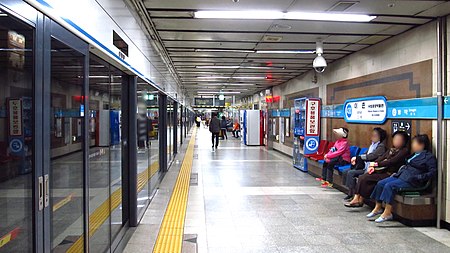Ichon station
Metro stations in Yongsan DistrictPages with no open date in Infobox stationRailway stations opened in 1978Seoul Metropolitan Subway stations

Ichon (National Museum of Korea) Station is a station in Yongsan-gu, Seoul on Seoul Subway Line 4 and Gyeongui–Jungang Line. This station is the closest to the National Museum of Korea, situated in the interior of Yongsan Family Park. It also serves eastern Ichon-dong, home to the largest Japanese community in South Korea with some 1,300 Japanese residents. The Line 4 station is located in Yongsan-dong 5-ga and the Jungang Line station is located in Ichon-dong. In 2018 it will become a transfer station with the Shinbundang Line.
Excerpt from the Wikipedia article Ichon station (License: CC BY-SA 3.0, Authors, Images).Ichon station
Seobinggo-ro, Seoul Hangangno-dong
Geographical coordinates (GPS) Address Nearby Places Show on map
Geographical coordinates (GPS)
| Latitude | Longitude |
|---|---|
| N 37.52254 ° | E 126.97316 ° |
Address
1
Seobinggo-ro
04379 Seoul, Hangangno-dong
South Korea
Open on Google Maps







